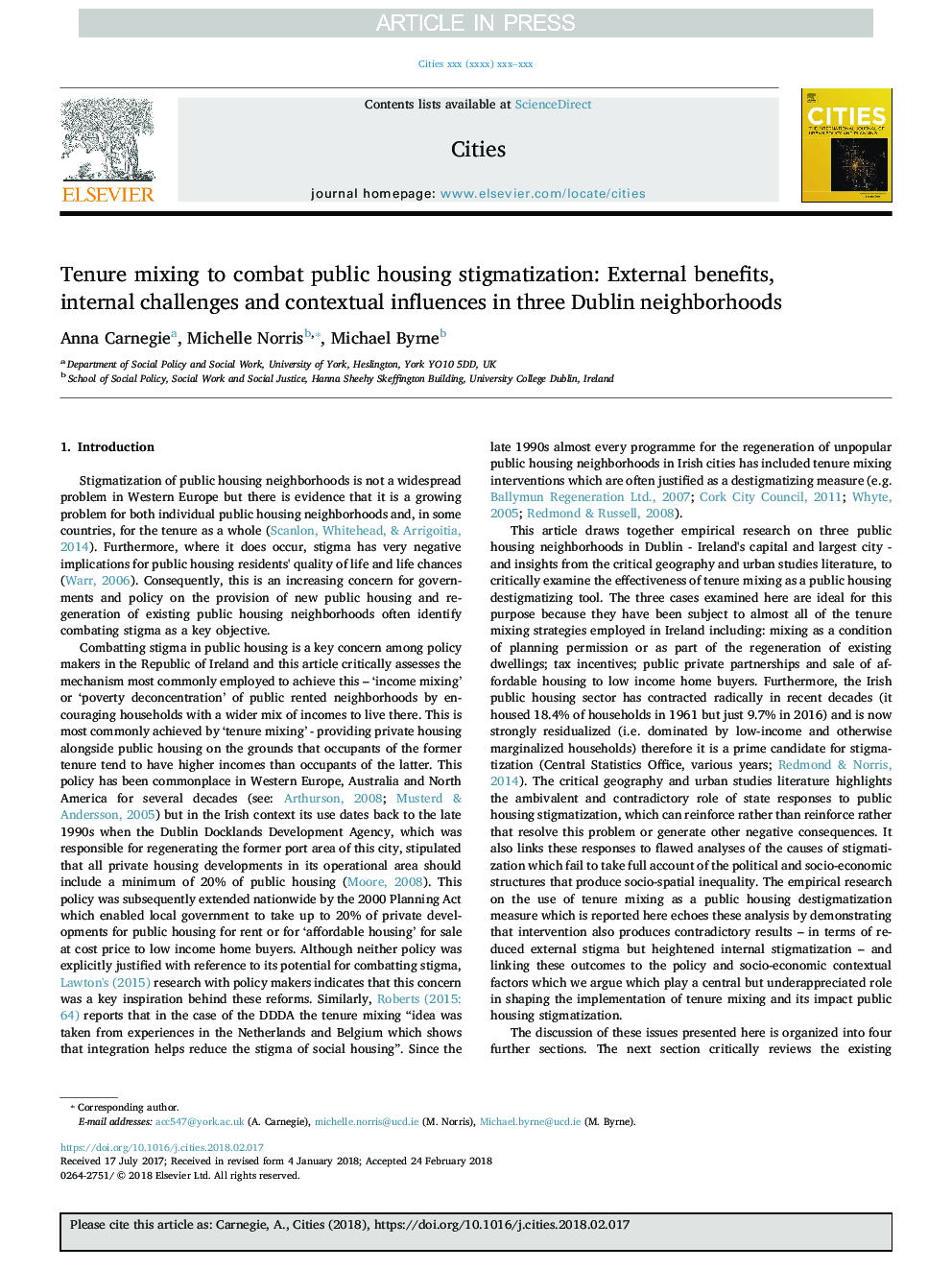| Article ID | Journal | Published Year | Pages | File Type |
|---|---|---|---|---|
| 7417052 | Cities | 2018 | 6 Pages |
Abstract
- This article draws together empirical research on three public housing neighborhoods in Dublin, Ireland and insights from the critical geography and urban studies literature, to critically examine the effectiveness of tenure mixing as a public housing destigmatizing tool.
- It demonstrates that the use of tenure mixing to destigmatize public housing can produce contradictory results in practice.
- Where tenure mixing is successfully implemented in a way which enables income mixing that it can help to ameliorate 'external stigmatization' of public housing neighbourhoods.
- However tenure mixing created significant community cohesion challenges in some these case-study neighborhoods which was at worst manifested in full-blown 'internal' (i.e. within neighborhood) stigmatization
- The analysis links these contradictory outcomes to the policy, housing market and socio-economic context which play an important and but often underappreciated role in shaping the implementation of tenure mixing and its impact public housing stigmatization.
- For instance, macro level socio-economic inequalities and stigmatizing attitudes towards public renters are reflected in micro-level divisions at neighborhood level. In addition the difficulty in properly mixing public and private dwellings created by public housing policy also reduced opportunities for interaction between neighbors which might have facilitated better neighborhood level integration
Related Topics
Social Sciences and Humanities
Business, Management and Accounting
Tourism, Leisure and Hospitality Management
Authors
Anna Carnegie, Michelle Norris, Michael Byrne,
